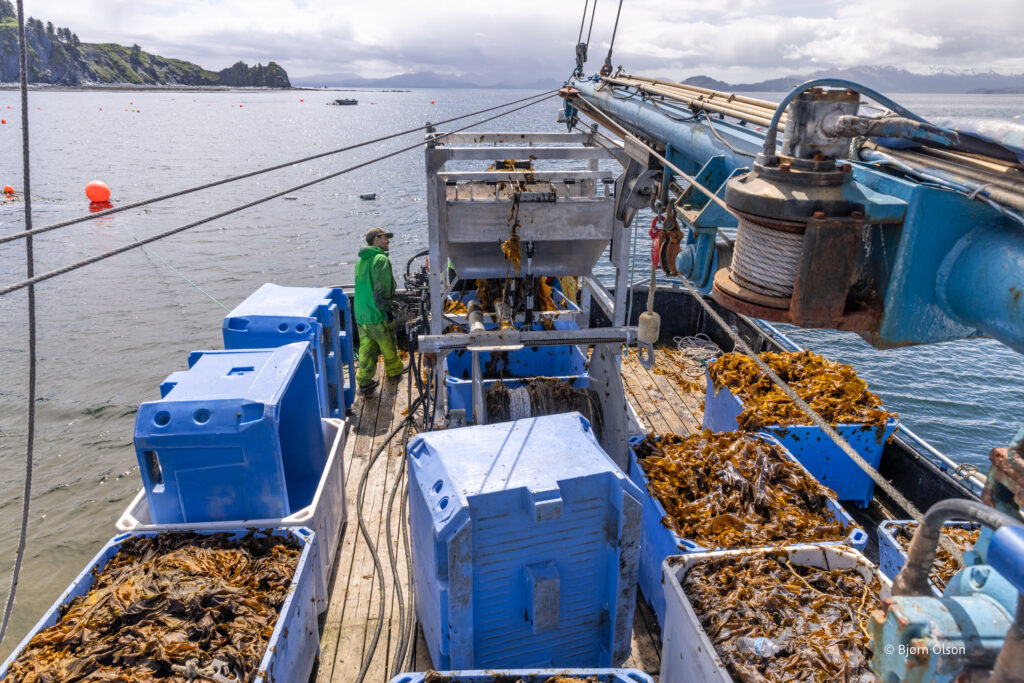Back to: Build Your Business
Let’s take a look at how everything you’ve learned can help you estimate the amount of revenue your farm might generate in its second year.

First, we’ll use our farm design and a conservative estimated yield of 4 pounds of seaweed per foot to calculate our expected total farm yield.
4 200-foot lines = 800 ft. of line x 4 lbs. of kelp per ft. of line = 3,200 wet lbs. of kelp
We’ll then estimate a 20% post-harvest loss, which gives us our adjusted farm yield:
3,200 wet lbs. of kelp x (1 – 0.2) = 2,560 wet lbs. of kelp
We’ll then make some assumptions about our product portfolio. Since it’s our first year farming, let’s assume that we’re going to make some mistakes and will only end up with a small amount of food-grade kelp—call it 30% of our farm’s yield—but we’re confident we can charge 12 dollars per pound at the local farmer’s market. The rest of the kelp we’ll sell to a local farm for compost at 30 cents per pound.
First, we calculate how much kelp will be sold to each market:
To be sold for food: 2,560 wet lbs. of kelp x 0.3 = 768 wet lbs. of kelp
To be sold for non-food use: 2,560 wet lbs. of kelp – 768 wet lbs. of kelp = 1,792 wet lbs. of kelp
Then, we multiply those volumes by the price per pound to get the revenue for each product type:
Revenue from food sale: 768 wet lbs. of kelp x $12 per lb. = $9,216
Revenue from non-food sale: 1,792 wet lbs. of kelp x $0.30 per lb. = $538
Finally, we add those two revenue numbers together to get our total estimated revenue for the farm in our first year:
$9,216 + $538 = $9,754